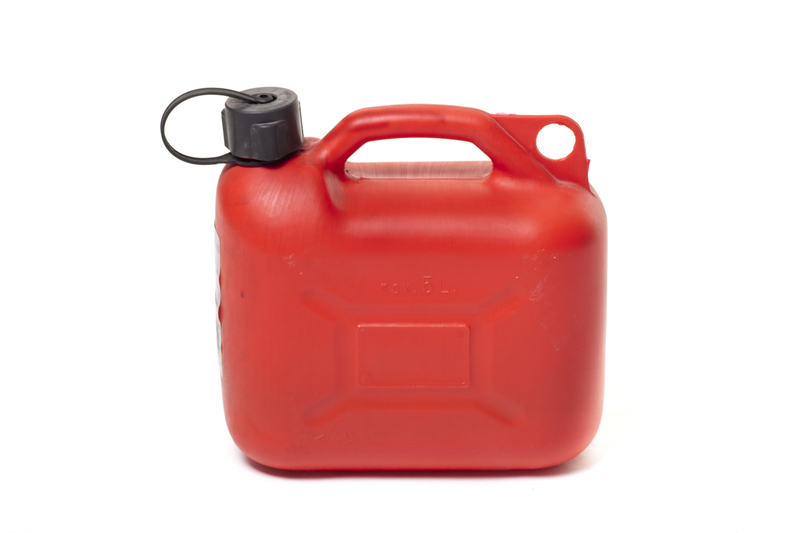Extend Your Sofa's Life: Expert Storage Recommendations
Posted on 22/05/2025
Extend Your Sofa's Life: Expert Storage Recommendations
Investing in a quality sofa can elevate the comfort and aesthetics of your living space. But what happens when you need to store your sofa during a renovation, relocation, or to make room for seasonal changes? Knowing how to properly store your sofa not only helps preserve its structure and appearance but can extend its lifespan by several years. This comprehensive guide delivers expert sofa storage recommendations designed to keep your favorite piece of furniture in pristine condition.

Why Proper Sofa Storage Matters
Your sofa is more than just another piece of furniture--it's a place for relaxation, entertainment, and cherished moments with loved ones. Proper storage techniques are crucial for maintaining:
- Upholstery fabric integrity
- Internal frame and support structure
- Cushion shape and comfort
- Aesthetic appeal and value
Failing to store your sofa correctly can lead to mold, mildew, unpleasant odors, sagging cushions, and even irreparable damage to the frame. Keep reading for expert tips that ensure your sofa remains in top condition--whether for short-term or long-term storage.
Preparation: Clean and Protect Your Sofa Before Storage
1. Deep Cleaning for Longevity
Before placing your sofa in storage, it is crucial to clean it thoroughly to avoid stains setting, odor accumulation, and pest infestations. Follow these cleaning steps based on your sofa's material:
- Fabric Upholstery: Use a vacuum with an upholstery attachment to remove dust, crumbs, and pet hair. Treat any stains with a fabric-friendly cleaner. Allow the sofa to air dry completely.
- Leather Upholstery: Wipe down with a soft, damp cloth and a mild leather cleaner. Apply a leather conditioner to prevent drying and cracking during storage.
- Wooden or Metal Parts: Dust thoroughly and treat with appropriate polish or anti-rust solutions.
2. Disassemble for Safe and Space-Efficient Storage
Carefully disassemble any removable parts such as sofa legs, armrests, cushions, or even modular sections. This not only makes transport easier but also helps prevent unnecessary strain on the joints and fabrics.
- Store accessories like screws, bolts, and washers in labeled bags to avoid losing small parts.
- Wrap these detachable components separately for extra protection.
3. Protect with High-Quality Covers
A common mistake is using plastic wrap for long-term sofa storage, which can trap moisture and promote mold growth. Instead, choose:
- Breathable fabric covers to ensure adequate air circulation and prevent condensation.
- Quilted furniture pads or moving blankets for extra cushioning, especially during transportation.
Always avoid directly sealing your sofa in non-breathable materials for extended periods!
Choosing the Right Storage Environment
Where you store your sofa is just as important as how you prepare it. Environmental factors such as temperature, humidity, and light exposure can dramatically affect your sofa's condition over time.
Climate-Controlled Storage: The Gold Standard
- Temperature regulation: Prevents expansion, contraction, and material warping.
- Humidity control: Protects against mold, mildew, and fabric deterioration.
- Consistent environment: Reduces risk of pests like moths or rodents.
If you're storing your sofa for more than a few weeks, invest in a climate-controlled storage unit for maximum protection and peace of mind.
Alternative Storage Locations: Garages, Basements, and Attics
While budget or availability may require using spaces like garages, basements, or attics, it's essential to take extra precautions:
- Elevate your sofa off the ground with pallets or blocks to prevent water damage from leaks or flooding.
- Use a dehumidifier to manage moisture levels and combat mold.
- Avoid direct sunlight that can fade fabrics and damage leather.
Expert Handling and Placement Tips
1. Positioning in Storage Units
Don't just shove your sofa inside the storage unit! Thoughtful placement makes a significant difference in its preservation.
- Upright Storage: Some professionals recommend storing sofas upright to save space, especially for short-term storage. However, only do this if the frame and upholstery are robust enough otherwise, extended vertical positioning may warp the structure.
- Horizontal Storage: Ideally, store the sofa resting naturally on its legs. This maintains the integrity of both the frame and cushioning. *Never stack heavy items on top of your sofa!* Compacting the cushions or crushing the structure is a recipe for long-term damage.
2. Allow Airflow Around the Sofa
A crucial yet often overlooked step is ensuring adequate airflow. Place your sofa with at least 2-4 inches of space between it and the storage unit walls to:
- Discourage moisture buildup
- Promote even air circulation
- Reduce the risk of fabric or leather sticking to surfaces
This straightforward tip significantly extends your sofa's life during storage and after.
Extra Precautions for Different Sofa Materials
Storing a Leather Sofa
- Avoid plastic covers, which trap humidity and can cause leather to crack.
- Apply a conditioner before wrapping to keep the material supple.
- Keep away from direct heat sources or extreme cold, as temperature swings can damage leather.
Storing a Fabric or Microfiber Sofa
- Vacuum and clean thoroughly to remove dirt and dust mites.
- Spray with a fabric protector to wick away moisture and stains.
- Use breathable covers and avoid humid environments.
Storing Antique or Delicate Sofas
- Consult with a furniture restoration expert for customized advice.
- Use archival-quality wrapping materials to avoid chemical reactions with aged fabrics or woods.
- Store away from items that could scratch or damage fragile details.
Maintenance During Storage
Long-term sofa storage requires periodic attention for optimal results. Here's how to minimize risks and maximize your sofa's lifespan:
- Check in regularly: Inspect the storage unit every 3-6 months for signs of moisture, pests, or mold.
- Avoid excess weight: *Never place boxes, electronics, or heavy items on your stored sofa.*
- Recondition and air out: If possible, refresh and air the sofa at regular intervals to prevent that stale, "stored" smell.
Transporting Your Sofa to and from Storage
Ensuring safe transport is vital to extending your sofa's lifespan during the storage process. Take the following steps:
- Lift with care: Enlist help to avoid straining frames or tearing upholstery.
- Use moving blankets and straps: Secure the sofa in transit to prevent shifting and scrapes.
- Plan your route: Measure doorways, hallways, and elevators in both locations to avoid awkward maneuvers or accidental damage.
Tips for Returning Your Sofa to Regular Use
After storage, a little TLC can breathe new life into your sofa and ensure it's ready for daily comfort:
- Allow your sofa to acclimatize to the indoor environment before using it, especially if it came from a storage facility with different temperature or humidity levels.
- Clean and refresh: Run over the upholstery with a vacuum and, if needed, a fabric freshener or safe cleaner. For leather, apply conditioner once more.
- Fluff cushions and check fittings: Make sure all assembly points are secure and the sofa sits evenly.

Frequently Asked Questions: Sofa Storage Solutions
Can I store my sofa outside under a tarp?
While tempting for short-term needs, *outdoor sofa storage* exposes your furniture to weather swings, pests, and humidity. Even under a tarp, moisture can cause lasting damage. Indoor, climate-controlled storage is always best.
How long can a sofa be stored without damage?
With proper preparation and maintenance, sofas can be stored safely for months or even years. The key is regular checks, moisture control, and using protective, breathable covers.
Is it necessary to clean a sofa before storage?
Absolutely! Cleaning before storage prevents mold, odors, and pest infestations. It's a simple yet crucial step in preserving your sofa's life.
Conclusion: Keep Your Sofa Comfortable for Years to Come
Ultimately, prolonging your sofa's lifespan comes down to diligent preparation, careful storage, and regular maintenance. By following these expert sofa storage recommendations, you protect your investment, promote sustainability, and keep your living space inviting for years to come.
Whether you're storing your sofa for a season or for the long-term, every step you take--cleaning, covering, using a climate-controlled space, and gentle handling--contributes significantly to its durability. Make your comfort and your sofa last. For more tips on furniture care and storage, explore our other expert guides!



